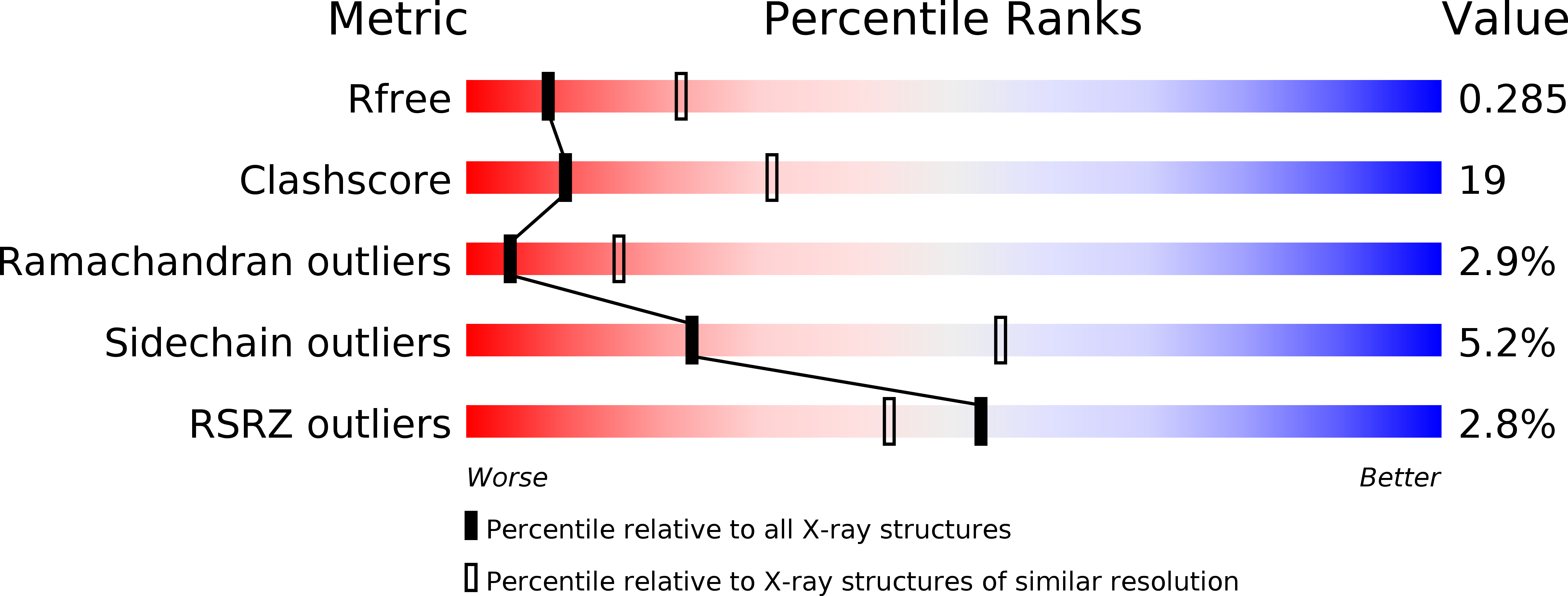Structural and biochemical characterization of the type III secretion chaperones CesT and SigE.
Luo, Y., Bertero, M.G., Frey, E.A., Pfuetzner, R.A., Wenk, M.R., Creagh, L., Marcus, S.L., Lim, D., Sicheri, F., Kay, C., Haynes, C., Finlay, B.B., Strynadka, N.C.(2001) Nat Struct Biol 8: 1031-1036
- PubMed: 11685226
- DOI: https://doi.org/10.1038/nsb717
- Primary Citation of Related Structures:
1K3E, 1K3S - PubMed Abstract:
Several Gram-negative bacterial pathogens have evolved a type III secretion system to deliver virulence effector proteins directly into eukaryotic cells, a process essential for disease. This specialized secretion process requires customized chaperones specific for particular effector proteins. The crystal structures of the enterohemorrhagic Escherichia coli O157:H7 Tir-specific chaperone CesT and the Salmonella enterica SigD-specific chaperone SigE reveal a common overall fold and formation of homodimers. Site-directed mutagenesis suggests that variable, delocalized hydrophobic surfaces observed on the chaperone homodimers are responsible for specific binding to a particular effector protein. Isothermal titration calorimetry studies of Tir-CesT and enzymatic activity profiles of SigD-SigE indicate that the effector proteins are not globally unfolded in the presence of their cognate chaperones.
Organizational Affiliation:
Department of Biochemistry and Molecular Biology, University of British Columbia, Vancouver V6T 1Z3, Canada.

















